Discover the Hidden Gems of Kanbula National Forest Park
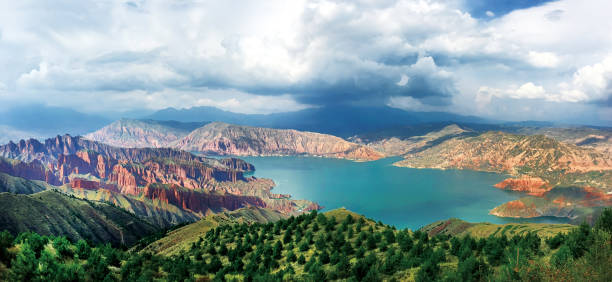
An Essential Guide to Visiting Kanbula_National_Forest_Park
Nestled at the confluence of the breathtaking Qinghai-Tibet Plateau and the rugged Loess Plateau lies Kanbula National Forest Park, a hidden gem in China’s vast natural landscape. Spanning over 152 square kilometers, this stunning destination is a paradise for nature lovers, adventure seekers, and those eager to embrace the rich tapestry of Tibetan culture. With an altitude ranging from 2,100 to 4,000 meters, the park’s diverse terrain boasts an eclectic mix of lush forests, striking Danxia landforms, and serene waterscapes that beckon visitors to explore.
Kanbula’s most captivating feature is its unique Danxia landform, characterized by otherworldly peaks and vibrant colors created by geological processes over millions of years. As you wander along winding trails, you may find yourself marveling at the intricate shapes of the rock formations, with some resembling pillars, pagodas, and even mythical creatures. The park also serves as a sanctuary for ancient Buddhist monasteries and hidden Tibetan villages, where travelers can gain insight into the local way of life.
Whether you’re seeking an invigorating hike, a tranquil spot for reflection, or simply a chance to immerse yourself in nature’s beauty, Kanbula National Forest Park promises an unforgettable experience. Best visited between May and October, this extraordinary destination invites you to create lasting memories against a backdrop of stunning landscapes and rich cultural heritage.
In This Guide
- An Essential Guide to Visiting Kanbula_National_Forest_Park
- The Rich History and Legends of Kanbula_National_Forest_Park
- Main Highlights: What You Absolutely Can’t Miss
- Planning Your Visit: A Practical Guide
- Tickets: Prices, Booking, and Tips
- How to Get There: A Complete Transportation Guide
- Local Cuisine and Accommodation Nearby
- Frequently Asked Questions
- Final Thoughts on Your Trip
The Rich History and Legends of Kanbula_National_Forest_Park
Nestled in the heart of Qinghai Province, Kanbula National Forest Park is not only a feast for the eyes but also steeped in rich history and legends that resonate with the local culture. The park, which covers an expansive area of 152 square kilometers, serves as a bridge between ancient traditions and the breathtaking natural landscape shaped by millennia of geological processes.
Historically, the region around Kanbula has been inhabited by diverse ethnic groups, notably the Tibetan people, whose culture and spirituality are deeply intertwined with the land. These communities have long revered the natural beauty and resources of the park, viewing it as a sacred space. Many Tibetan monasteries and nunneries are scattered throughout the forest, standing as testaments to the spiritual significance of the area. These structures not only enhance the serene atmosphere but also echo the legends of ancient Buddhist teachings that emphasize harmony with nature.
The park’s unique Danxia landform, characterized by its striking red cliffs and unusual rock formations, has captured the imagination of generations. According to local folklore, these peculiar peaks and valleys are said to be the remnants of ancient battles between celestial beings. Legends tell of warriors turned to stone, forever immortalized in their struggle, giving rise to the various formations that dot the landscape. Each peak has its own story, inviting visitors to explore and interpret the narratives woven into the very fabric of the earth.
In addition to its mythical past, Kanbula has played a crucial role in the development of the region. The construction of the Lijiaxia Reservoir, one of the world’s largest double-row turbine hydropower stations, transformed the landscape and the lives of the local inhabitants. The reservoir not only serves as a vital resource for irrigation and flood control but also integrates the natural beauty of the park with modern engineering marvels. This juxtaposition of ancient reverence and contemporary utility reflects the ongoing relationship between the people and their environment.
As you wander through Kanbula National Forest Park, you are not merely a visitor; you are a participant in a living tapestry of history, culture, and natural beauty. The majestic landscapes and spiritual sites invite contemplation and connection, allowing travelers to engage with the rich heritage of this extraordinary location. Whether you are drawn by the allure of the legends, the scenic vistas, or the cultural depth, Kanbula offers a unique journey through time—an experience that lingers long after you leave its enchanting bounds.
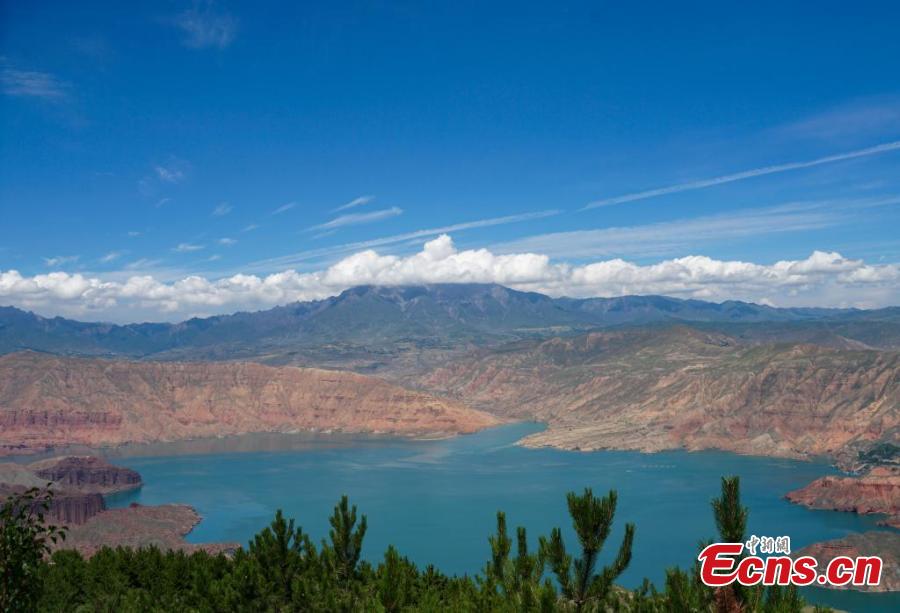
Kanbula_National_Forest_Park.
Main Highlights: What You Absolutely Can’t Miss
Kanbula National Forest Park is a hidden gem in Qinghai, China, offering a delightful blend of natural beauty, cultural richness, and outdoor adventure. Here are the key highlights that you absolutely cannot miss during your visit:
1. Dazzling Danxia Landform
The park is renowned for its stunning Danxia landform, a unique geological formation characterized by vibrant red and yellow rock layers. Stretching over 13 square kilometers, the landscape features 18 distinct peaks that resemble pagodas, towers, and even animals. As you wander along the scenic trails or stand at the viewing platforms, you’ll feel as though you’ve entered a surreal art exhibit crafted by nature itself. This captivating terrain not only offers breathtaking views but also serves as a geological museum, showcasing the Earth’s dynamic history.
2. Majestic Lijiaxia Reservoir
One of the park’s standout features, the Lijiaxia Reservoir, is the largest double-row turbine hydropower station in the world. The reservoir’s turquoise waters, surrounded by the dramatic scenery of the park, provide a striking contrast to the arid landscapes. Visitors can enjoy the serene beauty of the reservoir while learning about its vital role in irrigation, flood control, and electricity generation. Take a leisurely stroll along the shores or snap some photos to capture this stunning waterscape.
3. Unique Flora and Fauna
Kanbula National Forest Park boasts a rich tapestry of vegetation and wildlife. As you explore the trails, you’ll encounter dense forests teeming with diverse plant species and the chance to spot various birds and animals characteristic of the region. The park is an ecological treasure, making it a paradise for nature lovers and photographers alike.
4. Cultural Insights and Tibetan Villages
Immerse yourself in the local culture by visiting the Tibetan villages within the park. These communities offer a glimpse into the everyday lives of the Tibetan people, with their distinctive customs, traditional attire, and hospitable spirit. Engage with locals, sample traditional Tibetan cuisine, and learn about their rich cultural heritage, including the area’s ancient Buddhist practices.
5. Buddhist Monasteries and Spiritual Retreats
Scattered throughout the forest are several serene Buddhist monasteries and nunneries, each offering a tranquil atmosphere for reflection and meditation. These spiritual sites not only enhance the park’s cultural depth but also provide a peaceful escape from the hustle and bustle of daily life. Take a moment to connect with nature and spirituality as you explore these sacred spaces.
6. Stunning Hiking Trails
For adventure enthusiasts, Kanbula National Forest Park offers a network of hiking trails that cater to all skill levels. Whether you prefer a leisurely stroll or a more challenging trek, the trails provide breathtaking views of the Danxia formations, lush forests, and the dazzling reservoir. Don’t forget your camera—every turn presents a new opportunity for stunning photographs.
7. Ideal Time to Visit
To make the most of your trip, plan your visit between May and October, with July and August being particularly favorable months for exploring the park’s natural beauty. The weather is pleasant, allowing for comfortable outdoor activities and sightseeing.
8. Visitor Information
The park is open daily from 8:00 AM to 6:00 PM, and a nominal entrance fee of CNY 50 grants you access to this natural wonder. Note that additional costs may apply for park buses and boat cruises.
In summary, Kanbula National Forest Park is a destination that beautifully encapsulates the essence of Qinghai’s natural and cultural splendor. Whether you’re captivated by its geological wonders, enchanted by its serene waters, or inspired by its rich Tibetan heritage, there’s something for every traveler to cherish in this breathtaking park.
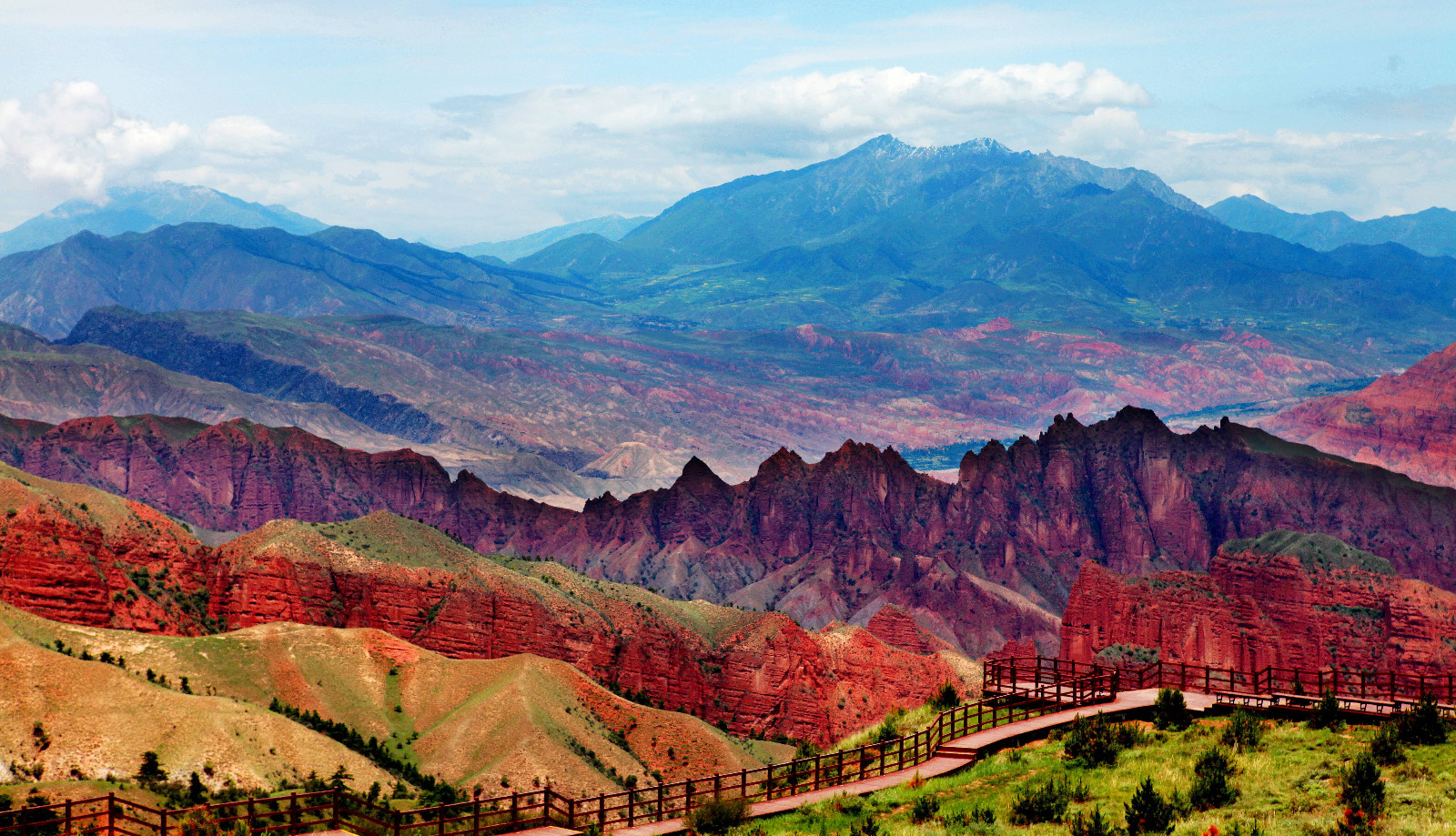
Kanbula_National_Forest_Park.
Planning Your Visit: A Practical Guide
Planning Your Visit to Kanbula National Forest Park
Nestled at the intersection of the Qinghai-Tibet Plateau and the Loess Plateau, Kanbula National Forest Park is a breathtaking retreat that promises a blend of natural beauty and cultural richness. To make the most of your visit, here’s a practical guide to help you navigate your journey through this stunning national park.
Getting There
Location:
Kanbula National Forest Park is situated approximately 110 km south of Xining City, the capital of Qinghai Province. The park is easily accessible by road. You can hire a car or take a bus from Xining, which typically takes around two to three hours.
Public Transport:
Local buses run from Xining to Jianzha County, from where you can catch a taxi or arrange for a local vehicle to take you to the park entrance.
Best Time to Visit
Ideal Seasons:
The park is best visited from May to October, with July and August being peak months due to the pleasant weather and vibrant scenery. During this time, the lush forests and unique landforms are at their most picturesque.
Weather Considerations:
Expect cool temperatures in the spring and autumn, while summer can be warm during the day but chilly at night, so layering is recommended. Always check the local weather forecast before your trip.
Park Hours and Admission
Opening Hours:
The park is open daily from 8:00 AM to 6:00 PM. Plan your visit accordingly to maximize your time exploring the various attractions.
Entrance Fees:
Admission costs CNY 50, which includes access to the park. Note that fees for park buses and boat cruises are separate. It’s advisable to carry cash, as card payments may not be accepted at all locations.
What to See and Do
Highlights of Kanbula:
– Danxia Landform: The park’s most famous feature, this unique geomorphological area is characterized by its striking red rock formations and odd peaks. Don’t miss the chance to hike along the scenic trails and take in the views from various vantage points.
– Lijiaxia Reservoir: This stunning reservoir not only provides picturesque views but also serves as a significant hydropower station. The turquoise waters against the backdrop of rugged cliffs create a perfect photo opportunity.
– Cultural Experiences: Explore the Tibetan villages scattered throughout the park for a glimpse of local life. You may also encounter hidden monasteries that add a spiritual ambiance to your visit.
Activities:
– Hiking and Walking: Numerous trails wind through the park, offering opportunities for both casual strolls and challenging hikes.
– Photography: With its unique landscapes and vibrant colors, Kanbula is a photographer’s paradise. Bring your camera to capture the stunning natural beauty.
– Camping: If you wish to extend your stay, consider camping in designated areas within the park for an immersive experience in nature.
Practical Tips
- What to Pack: Comfortable hiking shoes, a light jacket for cooler evenings, sunscreen, a hat, and plenty of water. If you plan to hike, trekking poles can also be helpful.
- Stay Hydrated: Given the park’s altitude (between 2,100 and 4,000 meters), it’s essential to stay hydrated and take breaks to acclimatize.
- Mobile Connectivity: Be prepared for limited mobile service within the park. It’s advisable to download maps and information before you arrive.
Accommodation Options
While there are no accommodations within the park itself, nearby towns like Jianzha offer various lodging options, from guesthouses to hotels. Booking in advance, especially during peak season, is recommended to secure your stay.
Conclusion
Visiting Kanbula National Forest Park is an unforgettable experience filled with natural wonders and rich cultural experiences. By planning ahead and following this guide, you can ensure a smooth and enjoyable journey through one of China’s most stunning national parks. Whether you’re an adventure seeker, a nature lover, or someone looking to immerse in local culture, Kanbula has something special to offer. Enjoy your visit!
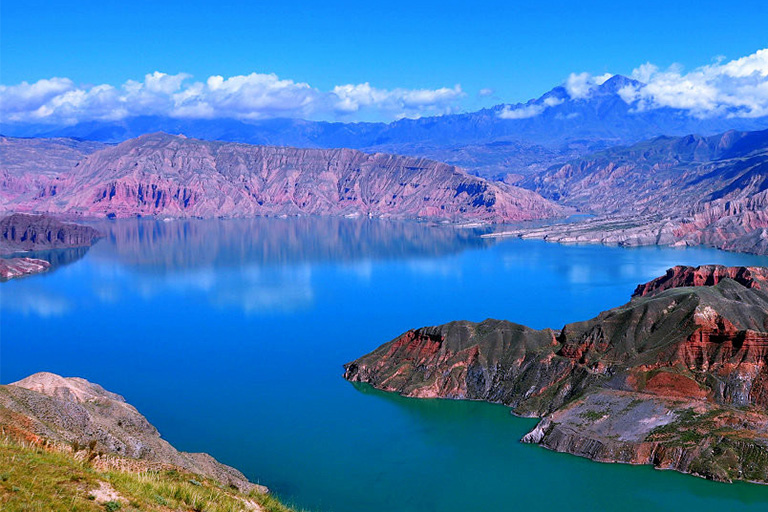
Kanbula_National_Forest_Park.
Tickets: Prices, Booking, and Tips
When planning your visit to Kanbula National Forest Park, it’s essential to be well-informed about ticket prices, booking options, and some handy tips to enhance your experience.
Ticket Prices
Admission to Kanbula National Forest Park costs CNY 50 (approximately $7). This ticket grants you access to the park itself, but keep in mind that additional fees apply for park buses and boat cruises, which are not included in the basic entry price. It’s advisable to check if these services are relevant to your itinerary, especially if you wish to explore the park more comprehensively.
Booking Information
Tickets can be purchased at the entrance of the park. However, to avoid any potential queues during peak seasons, especially from May to October, you might consider booking in advance through local travel agencies or online platforms that specialize in Chinese tourism. Many of these services offer customizable tour packages that can include transportation, guided tours, and additional activities, making your visit seamless and enjoyable.
Tips for Your Visit
1. Best Time to Visit: The ideal months for a visit are from May to October, with July and August being particularly popular due to the pleasant weather and vibrant scenery.
-
Plan Your Day: Allocate half a day to a full day for your visit. This will give you enough time to explore the stunning landscapes, including the unique Danxia landform, lush forests, and vibrant Tibetan culture.
-
What to Bring: Dress in layers, as temperatures can vary greatly between day and night. Comfortable walking shoes are a must, as you’ll want to explore the park’s scenic trails.
-
Stay Hydrated: Bring plenty of water to stay hydrated, especially if you plan on hiking. There are limited facilities within the park.
-
Cultural Etiquette: If you plan to visit any Tibetan monasteries within the park, remember to be respectful of local customs and traditions.
By keeping these details in mind, you can ensure a rewarding and enjoyable experience at Kanbula National Forest Park, where nature and culture converge in stunning harmony.
How to Get There: A Complete Transportation Guide
Reaching Kanbula National Forest Park is an adventure that begins long before you step foot in the park itself. Nestled in the stunning landscapes of Qinghai Province, this national park is accessible via several modes of transportation, making it a convenient destination for international travelers eager to explore its unique Danxia landform and rich Tibetan culture.
Getting to Kanbula National Forest Park
Arrival in Xining
Most travelers will start their journey to Kanbula National Forest Park from Xining, the capital of Qinghai Province. Xining is well-connected by air and rail, making it an ideal entry point.
-
By Air: Xining Caojiabao Airport (XNN) serves domestic and international flights. Major cities such as Beijing, Shanghai, Chengdu, and Xi’an have regular flights to Xining. Once you land, you can take a taxi or ride-hailing service to reach the city center, which is about 30 kilometers away.
-
By Train: Xining is also accessible via train from various cities in China. The Xining Railway Station is a hub for both high-speed and conventional trains. If you’re traveling from cities like Beijing or Chengdu, consider taking a high-speed train for a quicker journey.
From Xining to Kanbula National Forest Park
Once in Xining, you have several options to reach Kanbula National Forest Park, located approximately 110 kilometers to the south.
-
By Bus: The most economical way to travel is by bus. You can catch a bus from the Xining Long-distance Bus Station, which has regular services to Jianzha County (尖扎县), the nearest town to the park. The bus ride takes about 2-3 hours depending on traffic. Upon arrival in Jianzha, you can take a local taxi or arrange a shuttle service to the park entrance.
-
By Private Car or Taxi: If you prefer more comfort, consider hiring a private car or taxi. This option allows you to enjoy the scenic views along the way and can be more convenient, especially if you are traveling with a group. The journey typically takes around 2 hours.
-
Tour Packages: Many travel agencies offer tailored tour packages that include transportation from Xining to the park. This option might include a guide and additional services, making for a hassle-free experience.
Tips for Your Journey
-
Traveling Season: The best time to visit Kanbula National Forest Park is between May and October, with July and August being particularly popular due to the pleasant weather and vibrant scenery.
-
Altitude Awareness: Kanbula National Forest Park sits at an elevation of 2,100 to 4,000 meters. If you’re not acclimatized to high altitudes, take necessary precautions, such as staying hydrated and allowing yourself time to adjust.
-
Local Currency: Ensure to have some Chinese Yuan (CNY) on hand, as not all services may accept credit cards, especially in more remote areas.
-
Language: English may not be widely spoken in the region. Learning a few basic Mandarin phrases can enhance your travel experience and help with communication.
With its breathtaking landscapes and rich cultural heritage, Kanbula National Forest Park awaits your exploration. Whether by bus, taxi, or private car, your journey to this natural wonder will be just as memorable as the park itself.
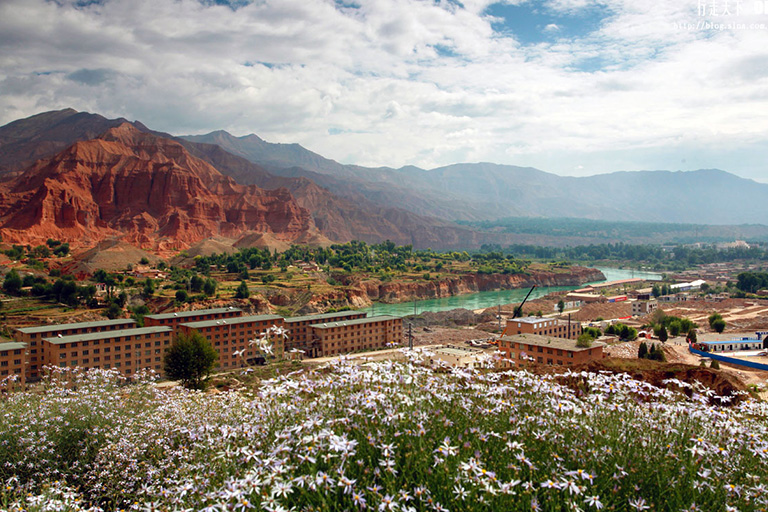
Kanbula_National_Forest_Park.
Local Cuisine and Accommodation Nearby
When exploring the breathtaking Kanbula National Forest Park, indulging in the local cuisine and finding the right accommodation can enhance your experience. Here are some delightful options that will allow you to savor the flavors of Qinghai while enjoying comfortable stays close to nature.
Local Cuisine
Qinghai’s culinary landscape is a blend of Tibetan and Han influences, offering a variety of dishes that reflect the region’s rich cultural heritage. Here are a few must-try delights:
-
Tsampa: A staple food among Tibetans, tsampa is made from roasted barley flour and often served with butter tea. It’s a nutritious and energizing option, perfect for a day of hiking.
-
Momos: These Tibetan dumplings are filled with meat or vegetables and are a popular snack. They are typically served with a spicy dipping sauce, making them a flavorful addition to your meal.
-
Yak Meat Dishes: Known for its tenderness and unique flavor, yak meat is commonly used in various dishes, such as stews and grilled skewers. Be sure to try yak hot pot for a warming meal after a day in the park.
-
Butter Tea: A traditional Tibetan drink made from tea, yak butter, and salt, butter tea is both soothing and invigorating. It’s often enjoyed with tsampa for a hearty breakfast.
-
Qinghai Noodles: These handmade noodles are typically served in a rich broth with a mix of local vegetables and meat. The unique flavor of the broth comes from the region’s spices and herbs.
Accommodation Nearby
Finding the right place to stay can make your visit even more enjoyable. Here are a few accommodation options near Kanbula National Forest Park that cater to various preferences and budgets:
-
Kanbula Hotel: Located just a short distance from the park’s entrance, this hotel offers comfortable rooms with stunning views of the surrounding landscape. It’s an excellent choice for families and travelers looking for convenience and amenities.
-
Tibetan Homestays: Immerse yourself in the local culture by opting for a homestay in one of the nearby Tibetan villages. This experience allows you to engage with local customs, enjoy homemade meals, and learn about the daily lives of the residents.
-
Lijiaxia Resort: Situated near the Lijiaxia Reservoir, this resort offers a tranquil escape with beautiful waterscape views. Guests can enjoy spacious rooms, outdoor activities, and easy access to both the reservoir and the national park.
-
Camping: For adventurous souls, camping in designated areas within Kanbula National Forest Park provides an unforgettable experience under the stars. Be sure to check local regulations and prepare accordingly for a safe and enjoyable camping trip.
-
Budget Guesthouses: There are several guesthouses in Kanbula Town that offer affordable accommodation with basic amenities. These are great for budget travelers looking to explore the park without breaking the bank.
With these culinary and accommodation options, your visit to Kanbula National Forest Park promises to be a memorable adventure filled with delicious flavors and comfortable surroundings!
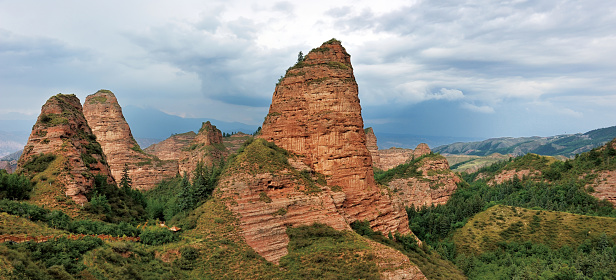
Kanbula_National_Forest_Park.
Frequently Asked Questions
Frequently Asked Questions About Kanbula National Forest Park
1. What is the best time to visit Kanbula National Forest Park?
The ideal time to explore Kanbula National Forest Park is from May to October, with July and August being particularly popular for their pleasant weather and vibrant scenery.
2. How much does it cost to enter the park?
Admission to Kanbula National Forest Park is CNY 50. Please note that this fee does not include park bus services or any cruises offered within the park.
3. How long should I plan to spend at the park?
A visit typically takes around half a day to a full day, allowing ample time to enjoy the stunning landscapes, unique geological formations, and spiritual sites.
4. What are the park’s opening hours?
Kanbula National Forest Park is open daily from 8:00 AM to 6:00 PM. Be sure to arrive early to make the most of your visit!
5. Are there any accommodations nearby?
While the park itself does not offer accommodations, there are various lodging options in the nearby Kanbula Town and surrounding areas, ranging from hotels to guesthouses.
6. What should I wear or bring when visiting the park?
Comfortable hiking shoes and layered clothing are recommended, as temperatures can vary significantly throughout the day. Don’t forget to bring water, sunscreen, and a camera to capture the breathtaking views!
7. Is it possible to do guided tours in the park?
Yes, guided tours are available and can enhance your experience with detailed insights about the park’s unique geological features and local culture. It’s advisable to book in advance, especially during peak seasons.
8. Are there any cultural or religious sites to visit within the park?
Absolutely! Kanbula National Forest Park is home to several Buddhist monasteries and nunneries nestled within the forest, offering visitors a chance to experience the spiritual atmosphere and local Tibetan customs.
Final Thoughts on Your Trip
As your journey through Kanbula National Forest Park comes to a close, you are left with memories etched in the vibrant landscapes and rich cultural tapestries that define this remarkable destination. From the stunning Danxia landforms that rise majestically against the sky, to the tranquil waters of the Lijiaxia Reservoir that reflect the world around them, every moment spent here is a testament to nature’s artistry.
This park is not just a feast for the eyes; it is a sanctuary for the soul, where ancient Buddhist monasteries and Tibetan villages invite you to pause, reflect, and immerse yourself in the serene lifestyle of the local communities. Whether you reveled in the thrill of outdoor adventures or found solace in the peaceful surroundings, Kanbula offers a unique blend of excitement and tranquility that resonates with every traveler.
As you head back, carry with you the essence of Kanbula—the spirit of discovery that beckons you to explore further and the beauty that inspires you to cherish the natural world. Until your next adventure, may the memories of this enchanting forest park continue to inspire your travels and ignite your wanderlust. Safe travels!